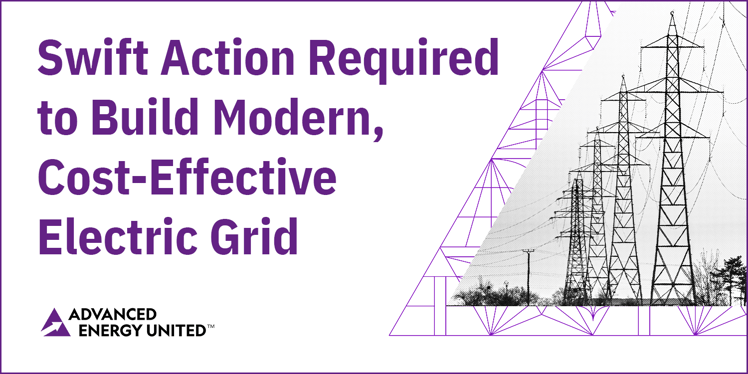 There is much discussion in the press about the high cost of rebuilding our transmission infrastructure to facilitate our clean energy future. There is much less discussion about the costs we are already paying associated with not moving quickly to rebuild our aging grid. Transmission is critical infrastructure, powering our 21st digital economy and keeping us all safe and protecting us when weather is extreme. Much of the U.S. transmission grid is long past its expected useful life.
There is much discussion in the press about the high cost of rebuilding our transmission infrastructure to facilitate our clean energy future. There is much less discussion about the costs we are already paying associated with not moving quickly to rebuild our aging grid. Transmission is critical infrastructure, powering our 21st digital economy and keeping us all safe and protecting us when weather is extreme. Much of the U.S. transmission grid is long past its expected useful life.
While there are many societal costs to inaction and procrastination in investing in our critical transmission infrastructure, there are very tangible costs related to our aging transmission grid that create significant upward pressure on consumer energy costs today that don’t get enough attention. Grid operators refer to these costs as “congestion” costs, and these costs are folded into consumer electric rates as part of the overall “transmission charge” on consumer electric bills.
Costs to consumers from congestion on the U.S. power grid more than doubled to an estimated $13 billion in 2021 from the year before and was estimated to reach $21 billion in 2022. These costs will likely keep rising until the needed transmission capacity is built.
So, What Are Congestion Costs?
Transmission congestion costs are caused by insufficient capacity on transmission lines that carry power from where it is produced to where it is being used. Insufficient transmission infrastructure creates “transmission congestion,” effectively an electricity traffic jam, and congestion costs occur when there isn't enough transmission capacity to deliver the lowest cost power to consumers, and the demand is then met by more expensive sources of electricity. Consumers pay the higher costs. Changes in generation, transmission, or demand can impact congestion, and because the electric grid must remain balanced at all times, the regional transmission operator will dispatch higher-cost electricity to the areas experiencing congestion. If generators are asked to adjust their power dispatch levels due to congestion, the regional transmission operator will pay them for providing these services - these costs are ultimately passed on to consumers as part of the transmission charge on their electric bills.
No single entity in the U.S. is responsible for reducing grid congestion - the regional transmission operators alone don’t have that job, and nor do transmission owners. Instead, coordinated state and regional planning among many policy makers and stakeholders is required. Consumers and states should press for solutions to high and rising congestion costs through relatively inexpensive grid-enhancing technologies that can be quickly installed or longer-term transmission investments. If demand continues to increase on the grid (through economic growth, EV deployment, electrification, etc.) without increasing transmission capacity, transmission congestion and congestion costs to consumers will continue to increase.
The Bottom Line
Our aging and neglected transmission infrastructure and electric grid needs massive investment to provide the needed reliability, resilience, and security consumers expect. The needed investment will cost money, but it will also save money while stimulating economic development and creating jobs. A well-planned, more fully integrated, and interconnected electric transmission grid is more secure and more resilient to winter storm events, saving lives and money. Further, an upgraded, more connected electric grid also reduces congestion costs associated with transmission constraints that currently increase consumer costs. Immediate action is required to build out the modern, distributed, clean energy grid that supports electrification and brings diverse, lower-cost clean energy from remote locations to where it is needed most.
Learn more about United’s advocacy work in support of transmission buildout, and read our recent blog post about how states, Congress, and FERC are tackling these challenges.